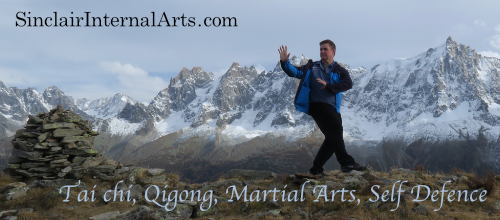When we practise different types of movement, the motor pattern is becomes a function of subconscious motor centre. Eventually, we develop an automatic memory of how to perform a particular skill, like walking, running, punching, balancing, deflecting an attack, etc.
These motor patterns refine our conscious and unconscious proprioception. Over time, we build a map of our awareness in our sensory cortex. This is called a proprioceptive map.
The two elements of proprioception are Vestibulocochlear (from the way the inner ear and cochlea inform the brain about movement and position relative to gravity) and myo-fascial (from what our muscles and connective tissue tell us about position and movement relative to gravity and other forces.)
The vestibular system in vertebrates is the sensory system of the inner ear that, along with the cochlea, provides an important sense of balance and spacial orientation. Tai chi can depend on this sense. But I have been told that most of one’s innate sense of balance is determined in childhood. If you did gymnastics as a child, you might have a better sense of balance than people who didn’t.
However, while you might not be able to improve this type of balance, you can still get better at balancing.
Tai chi can help develop another type of proprioception that comes from the feedback from our connective tissue, (skin, muscle, ligaments, tendons, bones, etc.) This gives us a sense of our body’s position in space, and its relationship to gravity and other forces. The slow movements and balancing postures combined with relaxation and deliberate cultivation of awareness, (what I call harmonizing the afferent and the efferent) can improve proprioception and coordination.
